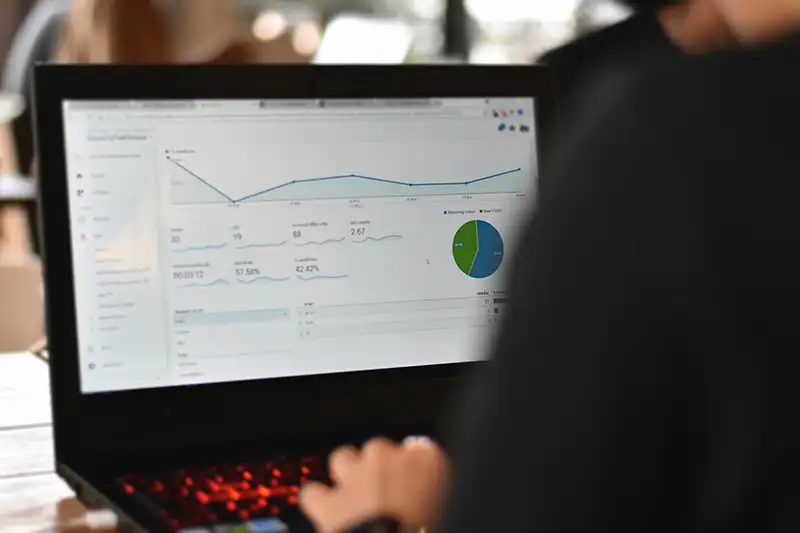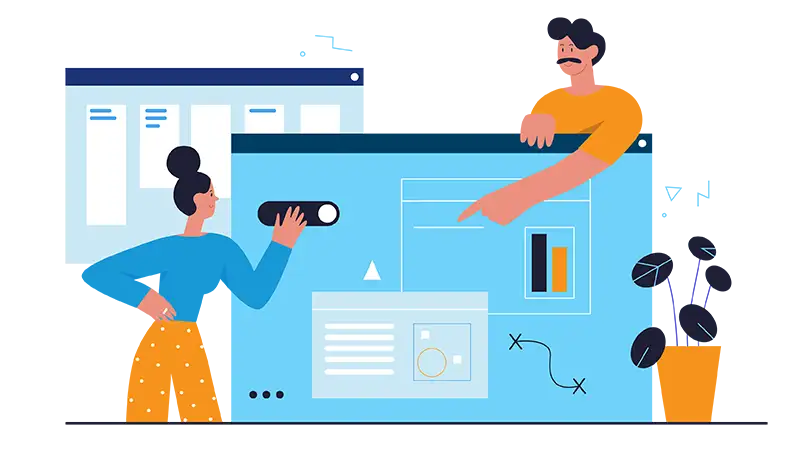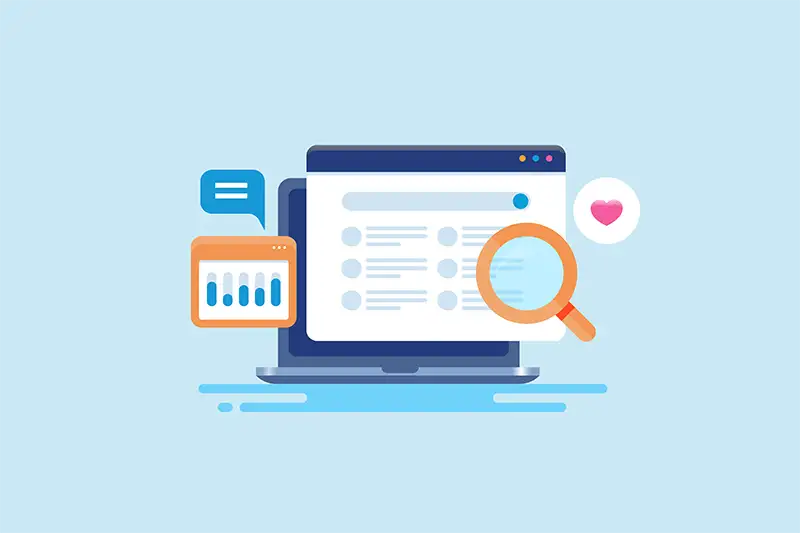Automating the Dental Marketing Funnel: What to Automate (And What Not To)
Posted on 9/22/2025 by WEO Media |
Key Takeaways: Dental Marketing Automation
| • |
Automate the right tasks: Use automation for reminders, review requests, follow-ups, and lead nurturing to keep your funnel moving without overwhelming your staff.
|
| • |
Keep the human touch: Case acceptance, financial discussions, and complex treatment follow-ups should never be automated. They require empathy and trust.
|
| • |
Segment your audience: Hygiene patients, implant leads, and cosmetic cases all need different messaging. Personalization keeps automation from feeling generic.
|
| • |
Measure everything: Track open rates, booked appointments, and case acceptance data to ensure your automation is driving real results, not just sending messages.
|
| • |
Balance for growth: Smart automation saves time, reduces no-shows, and increases case acceptance while giving your team more bandwidth to focus on patient care. |
Introduction:
Every dental practice has a marketing funnel, even if it isn’t officially mapped out. From the first moment a potential patient hears about your practice to the day they return for their second or third appointment, every step of their journey can be influenced by marketing systems that either work for you or against you.
That’s where automation comes in. Automation can help streamline dental marketing's more repetitive tasks like appointment reminders, review requests, patient follow-up campaigns, etc. This helps freeb up you and your team to focus on what matters most: delivering supreme dental care. Done right, automation ensures consistency, improves efficiency, and maximizes patient conversions without adding more work for your staff.
But here’s the catch: not everything should be automated. While technology is excellent for nurturing leads, scheduling, and maintaining ongoing communication, there are touchpoints in the patient journey that require a personal, human approach. Understanding which parts of the funnel benefit from automation—and which require direct human interaction—is the key to gaining trust and driving growth.
In this article, we’ll break down the dental marketing funnel stage by stage, highlight the opportunities where automation delivers the biggest impact, and explain where personalization is still irreplaceable. By the end, you’ll have a clear roadmap for creating a funnel that attracts, nurtures, and retains high-value patients without overwhelming your staff or sacrificing the patient satisfaction.
What Is a Dental Marketing Funnel?
Think of the dental marketing funnel as the blueprint for how strangers become loyal patients. It maps the journey from the very first Google search all the way to long-term loyalty, breaking down new patient acquisition into predictable, manageable stages.
Here’s how it works for most practices:
1. Awareness
This is where potential patients first discover your dental practice. Maybe they saw a paid ad for “dental implants near me,” came across your practice on Google Maps, or noticed your social media posts. At this stage, they’re just learning that your practice exists.
Marketing channels at this stage:
| • |
Google Ads, Meta Ads, YouTube Ads
|
| • |
SEO (ranking in local searches for services like “cosmetic dentist in [city]”)
|
| • |
Social media campaigns
|
| • |
Community engagement & sponsorships |
2. Consideration
Once a potential patient knows who you are, the next step is building trust. They compare your dental practice to others in the area, read reviews, browse your website, and check whether you offer the dental services and payment options they need.
Marketing channels at this stage:
| • |
Website with clear service pages and engaging web design
|
| • |
Patient testimonials and Google reviews
|
| • |
Educational blog posts, videos, and other website content today's patients find useful
|
| • |
Email and SMS nurture campaigns with FAQs, financing info, and before-and-after photos |
3. Decision
At this stage, the patient is ready to book an appointment... but how easy you make that process can make or break the deal. If scheduling is clunky or if they can’t get their questions answered quickly, they may move on to the next dental business.
Marketing channels at this stage:
| • |
Online booking systems with calendar integration
|
| • |
Automated reminders that reduce no-shows
|
| • |
Chatbots for quick responses (backed by live staff when needed)
|
| • |
Phone calls or text follow-ups from your team |
4. Retention & Advocacy
Once you’ve earned their trust, your goal is to keep existing patients coming back and referring your dental practice to others. This stage focuses on keeping patient communication consistent so they feel valued long after their first appointment.
Marketing channels at this stage:
| • |
Automated recall reminders for cleanings and check-ups
|
| • |
Post-appointment review requests
|
| • |
Referral program campaigns
|
| • |
Newsletters with practice updates, promotions, or educational marketing materials |
Why Funnels Matter for Your Dental Practice
The funnel isn’t just a marketing buzzword: it’s a way to create predictability in new patient flow. For high-value services like implants, Invisalign®, or cosmetic dentistry, a structured funnel can mean the difference between a steady stream of quality leads and an empty chair.
By breaking the dental patient journey into stages, you can identify where prospects drop off, which systems & marketing efforts should be automated, and where a personal touch still matters most.
Incorporating Automation In Your Funnel & Dental Marketing Strategy
Automation is most powerful when it handles the repetitive, time-consuming tasks that keep patients moving through your funnel. Think of it as a digital assistant: it doesn’t replace your staff, but it ensures nothing slips through the cracks.
Here’s how automation can boost each stage of the funnel:
Awareness Stage (Google Ads, Social Media Marketing, etc.)
Goal: Get noticed by the right people at the right time.
| • |
Smart Ad Targeting: Platforms like Google Ads and Facebook can automatically show your ads to users based on search intent, location, and even behavior patterns (e.g., people who’ve been researching dental implants).
|
| • |
Automated SEO Reporting: Instead of manually checking rankings and analytics, set up automated dashboards to track search visibility, clicks, and conversions.
|
| • |
Social Posting Tools: Schedule social media posts across multiple platforms in advance so your practice maintains a steady presence without daily effort. |
Result: Consistent visibility and more efficient ad spend without constant manual management.
Consideration Stage (Direct Mail, Email Marketing, etc.)
Goal: Build trust and keep new patients engaged.
| • |
Email Nurture Campaigns: Automatically send a series of emails after a lead submits a form—covering common FAQs, treatment options, financing, or success stories.
|
| • |
SMS Reminders: Automated texts can confirm consultation times, follow up after no response, and even share directions to your office.
|
| • |
Chatbots for FAQs: A chatbot on your site can answer common questions 24/7 (“Do you take Delta Dental?”), while routing more complex inquiries to a real person. |
Result: Patients feel supported and informed while your staff spends less time answering repetitive questions.
Decision Stage (Follow Up SMS, Appointment scheduling, etc.)
Goal: Make scheduling seamless and remove friction.
| • |
Online Booking Systems: Integrate appointment scheduling directly into your website so new and existing patients can book on their own time.
|
| • |
Lead Scoring & Alerts: CRMs can automatically flag high-value leads (e.g., someone who clicks through an implant financing email multiple times) so your team knows where to focus.
|
| • |
Automated Follow-Up Sequences: If a patient requests info but doesn’t book, trigger an automated sequence of texts/emails encouraging them to schedule. |
Result: Higher conversion rates with a less manual sales process for your front desk team.
Dental Patient Retention & Advocacy Stage
Goal: Keep the right patients coming back, and bringing their friends in too.
| • |
Recall Reminders: Automated texts and emails for cleanings, checkups, and treatment follow-ups reduce no-shows and boost reappointment rates.
|
| • |
Reputation Management: Immediately after an appointment, trigger an automated message asking a new patient to leave an online review on Google or Healthgrades .
|
| • |
Referral Campaigns: Set up an automated email or text system that thanks loyal patients for referrals and delivers rewards (gift cards, whitening discounts, etc.). |
Result: Higher lifetime value per patient, stronger reputation, and steady referrals, all with minimal staff effort.
 What You Should Not Automate
Automation can be a powerful driver of growth, but only if it’s applied wisely. The danger is turning your marketing funnel into something so mechanical that it erodes the very thing patients value most: trust and human connection.
Here are the areas where automation should take a back seat:
1. Case Acceptance Conversations
When a patient is considering implants, Invisalign®, or another high-value treatment, automation can’t replace a thoughtful conversation. These discussions require empathy, listening, and a real understanding of the patient’s concerns. A generic automated email won’t close the deal—your team will.
2. Financial Discussions
Payment plans, insurance coverage, and treatment costs are sensitive topics. Automating these communications risks confusion or frustration. Patients want to know they’re being heard, and that means having a real human explain options, answer questions, and build trust.
3. Complex Treatment Follow-Up
While reminders and educational emails are great, patients facing surgery or multi-step procedures should never feel like they’re just another number in your system. A personal phone call from your team checking in, offering reassurance, or answering questions, goes much further than a templated message.
4. Over-Reliance on Chatbots
Chatbots are helpful AI tool for FAQs and after-hours inquiries, but they should never be the only option for communication. If a prospective patient can’t reach a real human when they need one, they may choose a competitor who’s easier to talk to about their dental needs.
5. Generic “One-Size-Fits-All” Messages
Automation should feel personal. Sending the same mass message to everyone, whether it’s a hygiene reminder or a marketing campaign, risks alienating patients. Segmentation is key: a parent interested in pediatric dentistry doesn’t want the same content as someone researching cosmetic veneers.
The Benefits of a Balanced Automation Strategy
When automation is used thoughtfully, it doesn’t just save time—it creates a smoother, more profitable practice. The key is balance: let technology handle repetitive tasks while your front desk team focuses on the human moments that build trust.
Here are the biggest wins of getting it right:
1. More Consistent New Patient Flow
Automated lead nurturing keeps your practice top-of-mind. Instead of hoping prospects call back, automated reminders, emails, and retargeting ads keep your services in front of them until they’re ready to book. That means a steadier flow of qualified consultations.
2. Higher Case Acceptance Rates
Automation handles the “prep work.” By the time a patient arrives for a consultation, they should have already received educational emails, seen testimonials, and reviewed financing options. This makes your in-person conversations smoother and increases acceptance rates for high-value treatments like implants and Invisalign®.
3. Reduced No-Shows and Cancellations
Automated confirmations, reminders, and waitlist systems dramatically cut down on last-minute cancellations. Patients appreciate the convenience of text reminders, and your schedule stays full.
4. Stronger Patient Relationships
Contrary to the fear that automation feels “cold,” when it’s done right, it actually strengthens relationships. Patients receive timely communication, personalized follow-ups, and consistent check-ins that make them feel cared for—without overwhelming your staff.
5. Better Use of Staff Time
Your front desk shouldn’t spend hours playing phone tag. By automating scheduling, reminders, and basic follow-ups, your team has more time to focus on what matters most: delivering an outstanding patient experience face-to-face.
6. Scalable Growth
Whether you’re a single practice or a growing DSO, automation gives you a system that can scale without burning out your staff. The right tools grow with you, supporting both everyday dentistry and high-ticket procedures.
Why This Matters for Dentists
Balanced automation means you’re not just running a practice, you’re running a business with systems that support long-term growth. You attract more patients, convert more cases, and keep them loyal, all while freeing your front desk from repetitive busywork.
 Common Mistakes to Avoid in Funnel Automation
Automation can be a powerful tool and driver of growth, but many dental practices stumble by approaching it as a quick fix. The result? Missed opportunities, frustrated patients, and practice management systems that create more problems than they solve. Below are some of the most frequent missteps—and how to steer clear of them.
Treating Automation as a “Set It and Forget It” Tool
One of the biggest pitfalls is assuming that once the software is in place, the work is done. Successful automation requires ongoing monitoring, refinement, and adjustment. Patient behavior changes, marketing strategies evolve, and your practice goals shift over time. Practices that fail to revisit their marketing and sales funnels regularly often find that leads dry up or communications start to feel outdated.
Relying Too Much On Artificial Intelligence and Automation
AI tools and automation are great for efficiency, but they can’t replace human empathy. When every response comes from a chatbot or template, patients feel like numbers instead of people. For treatments that require trust, like implants or orthodontics, real conversations matter. Use technology to support your team, not replace them.
Content Creation Without Segmentation and Personalization
Another common error is sending the same messages to everyone. A parent scheduling a first cleaning for their child has very different needs than an adult considering full-mouth reconstruction. Practices that fail to segment their audience risk sending irrelevant content, which leads to disengagement and lower conversion rates. Intelligent automation means delivering the right message to the right person at the right time.
Not Tracking the Right Metrics
Too many dentists set up automated systems without measuring whether they’re working. Open rates, click-through rates, booked appointments, case acceptance percentages: these are the signals that tell you if your funnel is performing. Without tracking and analysis, you’re essentially running blind, assuming your automation is effective without evidence.
Relying on the Wrong Tools
It’s tempting to choose software based on cost or convenience, but not all automation tools are created equal. Some platforms are too generic, built for e-commerce or retail rather than healthcare. Others lack the integrations that dental practices need, such as links to scheduling systems, secure online forms, or compliance features. Selecting the wrong tool can lead to wasted time, compliance headaches, and a frustrated office manager.
 How WEO Media Helps Dentists Automate With Purpose
The best dental marketing funnels aren’t built on technology alone. They’re built on strategy. At WEO Media, we help dentists strike the right balance between automation and personalization, so you can capture more high-value patients without losing the human touch that sets your practice apart.
Our approach is simple but powerful:
| • |
Blending Automation with Personalization
We design systems that automate the repetitive processes—recall reminders, lead nurturing emails, review requests—while leaving space for your team to step in at the moments where empathy and trust matter most.
|
| • |
Proven Success with High-Value Procedures
Whether it’s implants, Invisalign®, or cosmetic dentistry, our strategies are designed to support patient journeys that require education and confidence-building. Automation helps warm up the lead, so by the time they arrive at your practice, they’re informed and ready to move forward.
|
| • |
Custom Strategies for Practice Growth
No two practices are the same. We don’t use cookie-cutter funnels, we build marketing systems around your goals, whether that’s expanding high-ticket treatments, filling hygiene schedules, or scaling across multiple locations.
|
| • |
Compliance-First Automation
Every system we implement is designed with HIPAA and ethical marketing in mind. Your patients’ trust is your most valuable asset, and we make sure it’s protected at every step. |
Ready to Build a Smarter Funnel?
A well-automated marketing funnel isn’t about replacing human connection, it’s about amplifying it. With WEO Media as your dental marketing partner, you get a patient acquisition strategy that works consistently, scales with your growth, and keeps the patient experience at the center.
Book your free consultation today
and learn how WEO Media can help you build a smarter, automated funnel that attracts high-value patients, strengthens relationships, and drives lasting practice growth.
|
|










